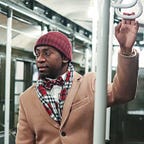Michael Nunoo on the Evolution of Jazz Music — From the 1920s to 2020
Jazz is a truly American phenomenon. It reflects the individual’s yearning for freedom and ability to express themselves without being tied down with rules. In other words, improvisation is the very essence of jazz music. Which in a way explains this genre’s appeal throughout the decades.
Michael Nunoo of Watervliet, New York, started out studying biomedical science while he was an undergraduate student. He currently works as a network engineer for a large organization where he is putting all his education to good use. He is also a jazz lover. He provides an overview of the evolution of jazz music.
The Early Stages
It was around the early 20th century that jazz finally found its true form. Born in the heart of New Orleans, different cultures and musical genres had influenced jazz musicians at the time. Michael Nunoo explains that jazz has been influenced by classical and Latin music, as well as American blues. All of these diverse genres came together and helped give jazz its original form.
However, that form has undergone many changes and transformations along the way. That is to be expected of an art form that rebels against rigid rules and allows the artist’s soul to soar with creativity and freedom. But it wasn’t until Louis Armstrong blew his trumpet that the world started to pay attention to jazz music.
Growing Strong
The birth of Louis Armstrong is synonymous with the birth of jazz. Born in 1901, Armstrong learned to play the trumpet at an early age and by 14 he was already playing in bars around New Orleans. But it was in Chicago that the young trumpet player made a name for himself and in doing so also elevated jazz to the respected art form we know it today.
According to Michael Nunoo, what sets Louis Armstrong apart from other jazz musicians who came before and after is that his improvisation style was so influential that many musicians followed his path and embraced this new form of music as their own. It’s no wonder that Armstrong is considered the father of jazz.
Bebop
But if it was Louis Armstrong that single-handedly laid the foundations for jazz music, it was the radio that helped it expand and reach a wider audience. It’s hard to imagine, Michael Nunoo elaborates, that playing in bars would have been enough to make jazz an established art form. Once that new music hit the airwaves, millions across the country from Kansas City to Chicago and New York realized that some new music was brewing out of the alleys of New Orleans. In New York, jazz was embraced enthusiastically, and jazz bands were featured in dance halls. That’s when jazz became the music genre for swing dance styles.
Around this time, especially between the 1930s and 1950s, a jazz legend was on the rise. Billie Holiday sang with passion and emotion that made her music an instant hit. Along with other illustrious names such as Count Basie, Duke Ellington, and Cab Calloway, they helped make jazz a popular music genre that soon became a household name.
This led to Dizzy Gillespie and Charlie Parker developing their own improvisation style that became known as bebop. It was a far cry from the humble beginnings of jazz as this style was more harmonically advanced. While still improvisational at heart, bebop was more intellectual in its approach.
Michael Nunoo on Jazz Today
More legends made their way to center stage in the jazz realm. From Ella Fitzgerald to Miles Davis and countless others, it was clear that jazz was here to stay. When you listen to the current jazz trends, Michael Nunoo says, it’s hard to recognize the original sounds or rhythms that were filling bars and dance halls in the first half of the 20th century. Jazz as a genre has developed immensely. Along the way, it has been transformed many times and gone down different paths.
Every new rebirth of the jazz genre creates more distinct tones. The music is fresher in every sense of the word. Thanks to its willingness to incorporate other music genres, jazz music remains strong and very much alive.
